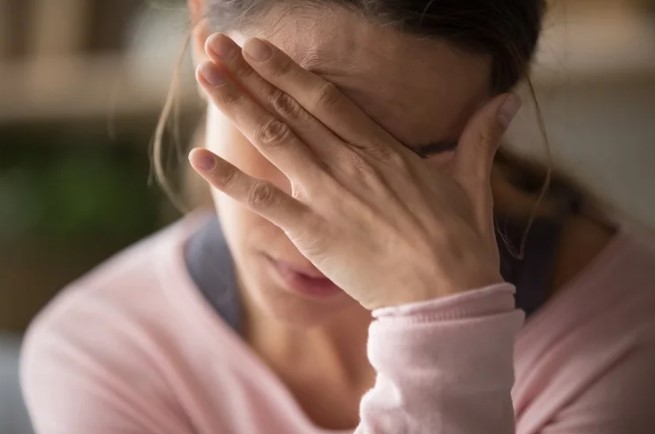Odors Unmasked: Decoding the Intricate Connection Between Smells and Migraine Attacks in a Comprehensive Research Endeavor

In a groundbreaking study, researchers have delved into the perplexing realm of migraines and their association with various odors. Migraine, a common neurological affliction causing excruciating headaches, affects approximately 8.4% of the Japanese population. Factors such as stress, fasting, weather changes, sleep disturbances, hormonal fluctuations in women, as well as exposure to light, sound, and odors, have been linked to increased migraine attacks.
The unique sensitivity to odors has been recognized as a distinct symptom in 95% of migraine patients, indicating its potential significance in triggering episodes. The olfactory bulb serves as the gateway for odor signals to reach the brain, and studies suggest that the activation of different brain regions by odors can set off migraines.
To shed light on this intriguing connection, scientists undertook a study involving 101 individuals diagnosed with clinical migraine. Participants were presented with a comprehensive questionnaire encompassing 35 specific odors known to be associated with migraines, based on previous research. The questionnaire aimed to identify which odors triggered migraine attacks and how individuals protected themselves from these olfactory stimuli.
Furthermore, a factor analysis, a statistical technique that condenses a vast array of variables into a more manageable set of factors by identifying commonalities, was conducted to determine the shared characteristics among the migraine-associated odors.
The findings of the study were nothing short of astounding. Of the study population, 16% experienced chronic migraines, while 84% experienced episodic migraines. Among those with chronic migraines, a staggering 75% also suffered from medication overuse headaches. A compelling correlation between odors and migraine attacks emerged in 78% of the participants.
Perfume odor emerged as the most commonly reported trigger for over 50% of the participants, followed by tobacco, fabric softener, body odor, garbage, hairdressing products, automobile smells, and sweat. Intriguingly, none of the participants cited lemon, tangerine, or apple odors as migraine triggers.
Apart from the 35 odor items included in the questionnaire, two additional scents, namely ikebana (the traditional Japanese art of flower arrangement) and gasoline, were frequently reported as migraine-associated odors.
Examining the places associated with migraine attacks, more than 50% of participants identified their workplace as a common trigger, followed by their homes, restaurants, and hospital waiting rooms. Curiously, none of the participants associated migraine attacks with consultation or examination rooms. Beyond the predefined locations in the questionnaire, trains, towns, and department stores emerged as the most frequently reported places linked to migraines.
In terms of preventive measures against odors, approximately 42% of participants resorted to wearing masks, while 23% used air cleaners and 22% utilized deodorant sprays. Furthermore, 17% of individuals opted to leave the area, while 5% covered their noses with handkerchiefs to ward off triggering odors.
Age-wise analysis revealed a significantly higher occurrence of migraine attacks due to tobacco or soap odors among younger participants. Gender also played a role, as only female participants reported experiencing migraines triggered by body odor or garbage.
When comparing different types of migraines, individuals with chronic migraines displayed a greater susceptibility to odors associated with fabric softener, sweat, socks, coffee, excrement, vomit, and animal scents compared to those with episodic migraines.
The factor analysis yielded six distinct groups of odors: fetid odors, cooking products, oil derivatives and others, shampoo and conditioner scents, cleaning products, and perfumes, insecticides, and rose fragrances. Notably, factor five, which encompassed floral-based hair styling preparations, laundry detergents, and fabric softeners with floral fragrances, exhibited a significantly higher association with migraine attacks in patients with chronic migraines compared to those with episodic migraines.
This groundbreaking study holds significant importance in understanding the triggers of migraines and their relationship with specific odorant substances. By categorizing the odors into distinct groups, researchers have provided valuable insights into the complexities of migraine attacks.
Moreover, the study has uncovered an intriguing aspect of chronic migraines, suggesting that individuals with this condition may have a heightened susceptibility to certain chemicals containing floral fragrances. This finding emphasizes the need for further investigation and awareness regarding the potential impact of floral-scented products on chronic migraine sufferers.
The implications of this research extend beyond scientific curiosity, offering potential avenues for improved management and prevention of migraines. Armed with knowledge about specific odor triggers, individuals can adopt appropriate measures to protect themselves and mitigate the likelihood of migraine attacks. Whether it’s wearing masks, using air cleaners, or employing deodorant sprays, these preventive measures can play a crucial role in enhancing the quality of life for migraine patients.
Ultimately, this study signifies a significant stride towards unraveling the intricate relationship between migraines and odors. By shedding light on the diverse factors associated with migraine attacks, researchers aim to provide a better understanding of this debilitating condition and pave the way for more targeted therapeutic interventions in the future.


